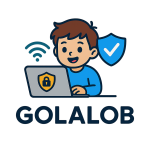Artificial Intelligence (AI) is everywhere these days—from chatbots that answer questions to apps that create art, music, or even write essays. Naturally, kids are curious and starting to explore these tools, too. For parents, this raises an important question: is AI a powerful learning partner, or just another screen that keeps kids entertained (but not always in a good way)?
Let’s break down the opportunities and risks, and how parents can help their kids use AI in a safe, healthy way.
The Promise of AI for Kids
AI isn’t all bad—in fact, it can be an incredible learning tool when used correctly. Here are some positive ways kids can benefit from AI:
- Personalized Learning – AI can act like a tutor, adjusting explanations until a child understands a concept.
- Instant Feedback – Whether it’s practicing math problems or improving an essay, AI can point out mistakes right away.
- Creativity Boost – Kids can use AI to brainstorm stories, create art, or even design simple games.
- Skill Building – Many coding apps now use AI to teach kids programming in a fun, interactive way.
In short, AI has the potential to make learning more engaging and accessible—something parents have always wanted.
The Risks Parents Need to Watch For
Of course, AI isn’t perfect, and kids aren’t always equipped to tell the difference between good and bad information. Here are the main concerns:
- Accuracy Issues – AI sometimes gives wrong answers (called “hallucinations”), and kids may believe them without question.
- Privacy – Free AI tools may collect data. Kids might overshare personal information without realizing the risks.
- Overreliance – If kids use AI to do the work for them (like writing essays or solving math problems), they miss out on actually learning.
- Inappropriate Content – Without filters, AI tools can sometimes generate content not suitable for children.
AI isn’t dangerous by default, but without guidance, it can easily slide from helpful tutor to digital babysitter—keeping kids busy but not really helping them grow.
How Parents Can Guide Kids Toward Healthy AI Use
The good news? With the right approach, parents can help kids use AI safely and smartly. Here are some practical tips:
✅ 1. Set Boundaries
Treat AI like any other screen activity. Decide when and how your child is allowed to use it (for homework, creativity, or exploration—not endless fun prompts).
✅ 2. Be a Co-Pilot
Encourage your kids to use AI alongside you. Ask them to read AI’s answers aloud, then discuss whether it’s right or wrong. This turns it into a learning conversation rather than passive consumption.
✅ 3. Encourage Creativity
Instead of only asking AI for answers, encourage your child to use it as a tool for creativity:
- “Write a bedtime story together.”
- “Make up a riddle.”
- “Generate a recipe for a silly sandwich.”
✅ 4. Teach Fact-Checking
Show your kids that AI doesn’t always know the truth. If it gives an answer, encourage them to double-check with a trusted source (like a textbook, teacher, or reliable website).
✅ 5. Choose Kid-Friendly AI Tools
Some AI platforms are built with kids in mind, offering stricter filters and educational focus. Look for tools designed specifically for learning, not just open-ended chatting.
Final Thoughts
AI is here to stay—and our kids will grow up in a world where it’s a normal part of life. That means banning it completely isn’t realistic. Instead, parents can help kids see AI for what it really is: a powerful tool, but not a replacement for thinking, learning, and creating on their own.
So, is AI a helpful tutor or a digital babysitter? The answer depends on how it’s used. With parent guidance, it can be the tutor kids need to grow. Without it, it risks becoming just another brainrot screen.
